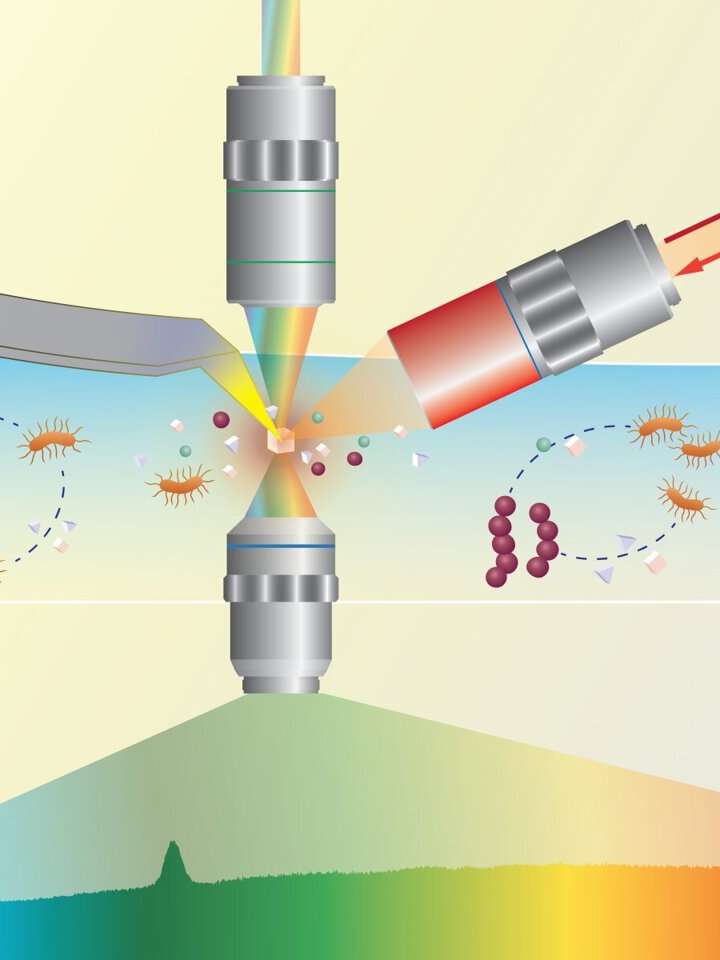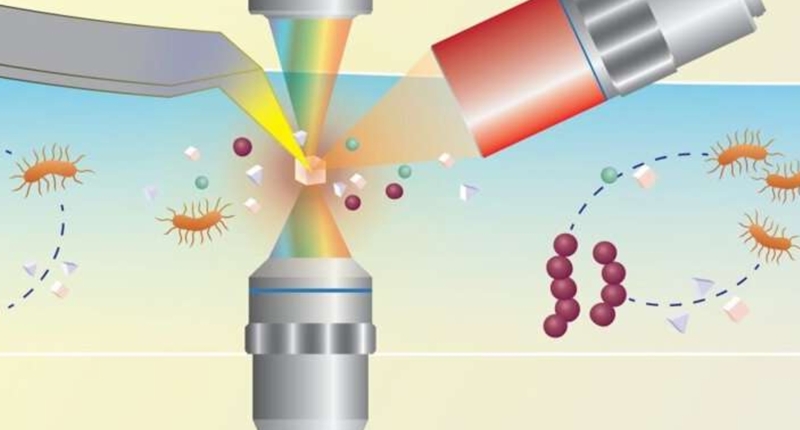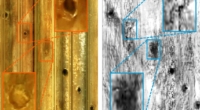BIGTUNA is a next-generation bioimager that uses nanooptical technology to map metabolites exchanged by live microbes. The instrument is significantly improving metabolic mapping by using multiple optical capabilities to identify molecules and understand how they interact. Developed by the Pacific Northwest National Laboratory’s Chemical Dynamics Initiative, the technology has significant implications for understanding gene function, the health of the planet, and identifying the molecular basis of various diseases. BIGTUNA has the potential to provide insights into how microorganisms communicate with each other and their environment, using molecules instead of words. Researchers hope to gain a better understanding of the intricacies of gene function and the health of the planet through bioimaging. The technology marks a significant breakthrough for bioimaging, as previous technologies have struggled to decipher the molecular conversations that take place between microbes.

Novel Nano-optical Technology Enables Mapping of Metabolites in Living Cells
Bioimaging can help us understand the chemistry that fuels microbes, providing important clues about gene function and the health of the planet. However, one of the biggest challenges in this field has been deciphering the molecular conversations that take place between microbes. To address this, a team of researchers at the Pacific Northwest National Laboratory (PNNL) developed a bioimaging instrument called BIGTUNA, short for BioImaginG Technology Using Nano-optical Approach, which is making progress towards mapping metabolites exchanged by live microbes.
Unlike previous technologies, BIGTUNA uses multiple optical capabilities, each providing complementary information about the position and composition of molecules in a study sample. Researchers use a very sharp nanosized needle with many laser sources focusing on its tip. They position the needle’s tip in the sample area they want to examine, then use the light focused on the tip of the needle to measure the sample’s physical and chemical features. This enables researchers to identify molecules and understand how they interact.
The technology was developed by the Chemical Dynamics Initiative (CDi), an internal PNNL investment, which supported PNNL chemist Patrick El Khoury and his team as they developed the technology to measure phenomena in the quantum realm. The team imaged subatomic waves of energy called phonons as they formed, beat, and dissipated in a single trillionth of a second. Now, they are using the same technology to image metabolites and phonons in real space and real-time, marking a significant breakthrough for bioimaging.
The technology has significant implications for understanding the intricacies of gene function and the health of the planet, as well as for identifying the molecular basis of various diseases. Furthermore, the technology can provide insights into how microorganisms communicate with each other and their environment, as they use molecules instead of words.
Overall, BIGTUNA is a next-generation bioimager that is significantly improving metabolic mapping. The fundamental advances required to achieve this goal were a challenge worthy of a national laboratory and continued investments. The team is now taking the technology to the next level as they use bioimaging to map metabolites exchanged by live microbes, thus opening up a new frontier in bioimaging.
BIGTUNA, a next-generation bioimager developed by a team of researchers at the Pacific Northwest National Laboratory, is making progress toward mapping metabolites exchanged by live microbes. The instrument is significantly improving metabolic mapping by using multiple optical capabilities to identify molecules and understand how they interact. Through this, researchers hope to gain insights into how microorganisms communicate with each other and their environment, as they use molecules instead of words. The technology has significant implications for understanding gene function, the health of the planet, and identifying the molecular basis of various diseases.
Don’t miss interesting posts on Famousbio










